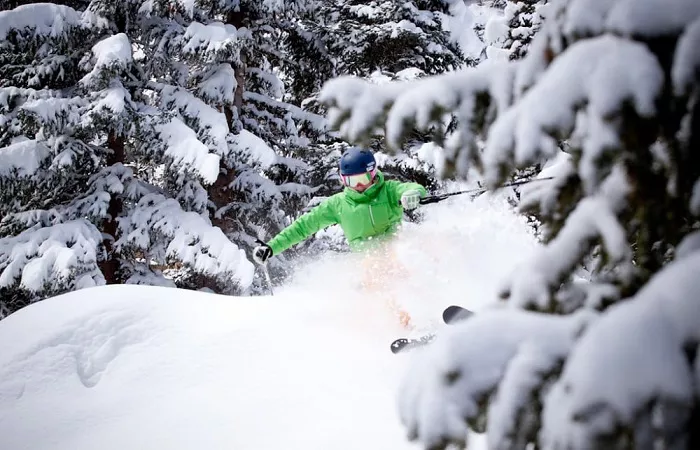For winter sports enthusiasts, the end of the skiing season in Washington is an eagerly awaited yet bittersweet event. Skiing in Washington offers some of the best snow experiences on the West Coast, with its majestic mountains and world-class resorts. As the season draws to a close, skiers often wonder when they can no longer enjoy the slopes and when they should pack up their gear until the next winter. This article will explore the factors that influence the end of the skiing season in Washington, providing a comprehensive guide to help skiers plan their trips accordingly.
Factors That Influence the End of Skiing Season in Washington
The exact end date of the skiing season in Washington depends on various factors, including weather conditions, snowpack, and resort-specific schedules. While some general trends can be observed, the season’s end is rarely predictable due to the region’s complex climate and topography.
Weather Conditions
One of the most significant factors determining the skiing season in Washington is the weather. The state is known for its unpredictable climate, especially in the mountainous areas. Ski resorts in Washington rely heavily on snowfall to extend the ski season, and any change in weather patterns can dramatically affect the closing date. Late-season storms can prolong skiing conditions, while early warm temperatures can lead to an early closure.
Snowpack and Snowfall
The snowpack is essential for maintaining skiing conditions. Ski resorts monitor snow accumulation throughout the season, and a significant drop in snow depth often signals the end of the season. The Pacific Northwest typically experiences a considerable amount of snowfall during winter, which can last well into April. However, if the snow begins to melt due to warmer temperatures or rain, resorts may close their lifts early.
Resort-Specific Schedules
Each ski resort in Washington has its own operational schedule, which may vary from year to year. While some resorts aim to stay open until late April, others close earlier depending on snow conditions and visitor demand. Major ski resorts in Washington include Stevens Pass, Crystal Mountain, and Mount Baker, each with a unique season end date.
Typical End Dates for Ski Resorts in Washington
Below are some typical end dates for popular ski resorts in Washington, keeping in mind that the actual dates can vary depending on the weather.
Stevens Pass
Stevens Pass is one of the most popular ski resorts in Washington, located in the Cascade Range. The resort typically closes in late April, but this can vary depending on the snowpack. If the snow conditions are favorable, Stevens Pass may extend its season into early May. However, if the temperatures warm up early, the resort may close sooner.
Crystal Mountain
Crystal Mountain, the largest ski resort in Washington, usually concludes its skiing season in mid to late April. With its expansive terrain and high elevation, Crystal Mountain often experiences extended skiing conditions. However, warmer weather or rain can cause an early shutdown, particularly for lower elevation runs.
Mount Baker
Mount Baker is famous for its snowfalls, which are often the heaviest in North America. This resort has a reputation for staying open later than others. Mount Baker’s ski season can extend well into May, and sometimes even early June if the snowpack remains sufficient. However, extreme weather can cause the resort to close earlier than expected.
Other Ski Resorts in Washington
Smaller resorts like Snoqualmie Pass and 49 Degrees North typically close earlier than larger resorts like Mount Baker. These resorts usually wrap up their season in mid to late April. The exact dates can vary depending on snow conditions and skier demand.
Planning Your Ski Trip Based on Season End
If you’re planning a ski trip in Washington, it’s crucial to stay updated on weather forecasts and resort-specific schedules.
Since skiing conditions can change rapidly, it’s a good idea to check the ski resort’s website for real-time updates on snow levels and lift operations. Skiers should also prepare for fluctuating weather conditions, especially if they plan to ski near the season’s end.
Best Time to Visit for Late-Season Skiing
If you want to maximize your chances of skiing into late April or May, visiting resorts with higher elevations like Crystal Mountain and Mount Baker is recommended. These areas typically hold snow longer than lower-elevation resorts.
Additionally, spring skiing often brings mild temperatures and fewer crowds, offering a more relaxed and enjoyable experience.
What to Expect for Spring Skiing
Spring skiing is unique in that it comes with warmer weather, longer days, and softer snow. However, skiers should be prepared for varying conditions. Early morning runs may offer firmer snow, while the afternoon can bring slushy or wet conditions. It’s essential to wear layers and bring sun protection, as the sun is often stronger during the spring months.
Conclusion
The end of the skiing season in Washington can vary significantly depending on weather, snow conditions, and resort-specific schedules. While many resorts close in late April, some high-elevation areas may remain open into early May or even June. Skiers should keep an eye on real-time conditions and adjust their travel plans accordingly. Whether you’re planning a late-season trip or hoping to catch the tail end of the ski season, Washington’s mountain resorts offer a thrilling skiing experience right up until the season’s last run.

